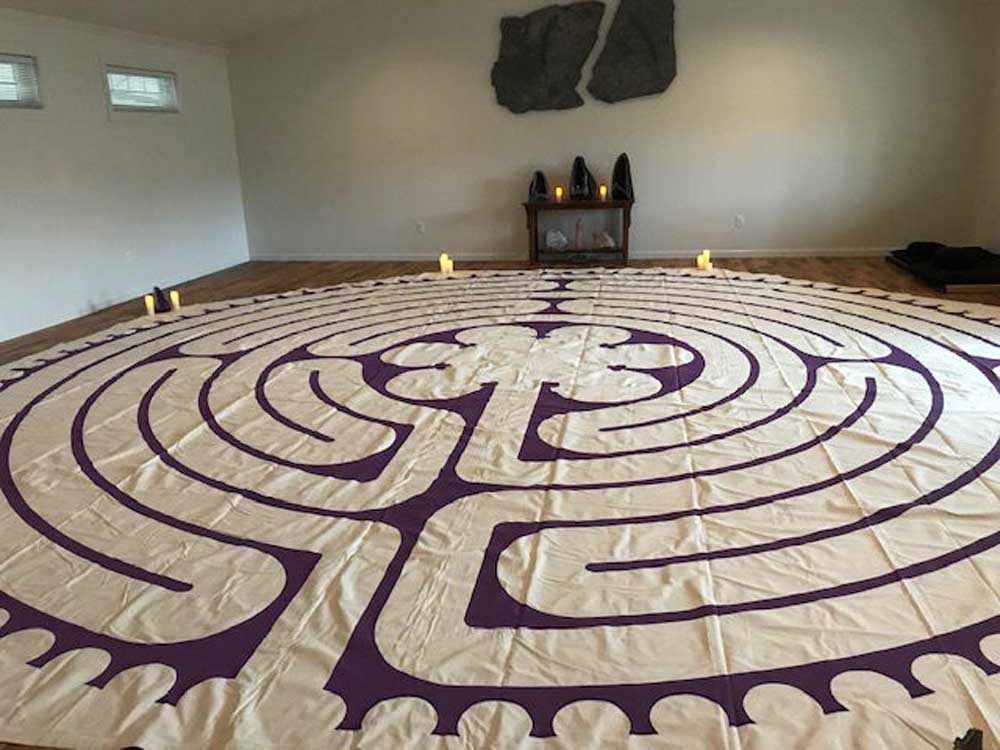MEDICAL GUIDE: Releasing, receiving, returning in a labyrinth
Published 12:02 pm Thursday, February 13, 2020

- Canyon Mountain Center has a 24-foot indoor canvas labyrinth that can be used during inclement weather. It is portable and can also be taken to other locations for special events.
Canyon Mountain Center is a non-denominational well-being center for those wishing to explore complementary and supportive health options in John Day. These options include a focus on health and wellness through stress reduction, expansion of personal awareness and healthy lifestyle choices. We offer many ongoing classes: meditation, yoga, Pilates, labyrinth walks and more. Most people are aware of the first three classes but maybe not a labyrinth. So what is the labyrinth all about?
Where did the labyrinth originate?
In the medieval times, labyrinths were built into the floors of churches and were believed to be used for pilgrimages. Only three out of 23 Gothic Cathedrals in Europe still have their original labyrinths. After traveling to France to study the early 13th century labyrinth embedded in the floor of Chartres Cathedral outside of Paris, Rev. Dr. Lauren Artress, a Canon of Special Ministries at Grace Cathedral in San Francisco, discovered the healing power of this ancient symbol.
Thus began Artress’s world-wide quest to revive awareness of ancient labyrinths as a spiritual and healing tool. There are now over 6,000 labyrinths listed on her Veriditas Labyrinth Locator website (veriditas.org), with at least 141 labyrinths located in Oregon. The outdoor CMC Labyrinth was completed and dedicated on March 20, 2016, over 20 years after Sandy Bay began her training with Artress at Grace Cathedral.
What is a labyrinth?
The labyrinth is an ancient walking meditation tool found in many cultures around the world. Many designs have been discovered, but each has only one path into the center and back out, unlike a maze which has dead-ends that create confusion. The path becomes a mirror for where we are in our lives. The rhythm of walking (placing one foot in front of another) quiets the mind, relaxes the body and refreshes the spirit. It is best to walk the labyrinth with an open heart and an open mind, as each walk on the labyrinth is different and unique.
Walking the labyrinth can be described as three stages (the three R’s):
(1) Releasing (walking into the labyrinth): Letting go of distractions, quieting the mind, opening your heart;
(2) Receiving (pausing in the center): Listening to guidance, being present, meditating, prayer; and
(3) Returning (walking out of the labyrinth): Reflecting, resolving, integrating the experience.
How do you use a labyrinth?
There are unlimited ways to use a labyrinth. In religious terms, it can be called a path to prayer, contemplative, quieting the mind, union or a pilgrimage. In the public arena, the labyrinth can be described as a tool for stress reduction, self-reflection, a walking meditation, mindfulness, creativity and wellness. In the new consciousness fields, it can be described as unity, intention, inner wisdom, mind-body-spirit integration, transformation, mystical or magical. As you may guess, the labyrinth can meet you where you are in your life and give you valuable feedback, no matter what situation leads you to take your first walk on it.
Labyrinths are becoming very common in all areas, public and private. You will often find them in churches, hospitals, wellness centers, spas, schools, prisons, hospice centers, corporations, parks, open spaces, beaches, private yards and college campuses. Labyrinths can be used for spiritual insight, healing, anxiety and stress reduction, creativity, as a tool for rituals and ceremony, community building, focusing skills and innovation.
What is the symbolism of walking a labyrinth?
People new to the labyrinth experience often ask the question: How do you know if the labyrinth works? Only you can answer that question for yourself, as you “notice what you notice.” For example, did old memories or emotions come up that surprised you, did you receive any insights on an issue that you were wishing to resolve, did you feel calmer or more peaceful? Every walk on the labyrinth will be different; it is best to let go of any expectations about what will, or will not, happen.
You can use everything that occurs on the labyrinth as a metaphor. Some examples are: Think of walking the labyrinth as a “two-way street” where you meet others on the path. Notice your reactions and inner impulses as you meet others walking toward you: What do you do? If you get lost on the path, how is that symbolic of losing your focus in your life? If you want to cross the lines of the labyrinth and don’t do it, where do you feel restricted or controlled in your life? Why are you holding back and pleasing others? Any of these experiences on the labyrinth can give you profound insights into yourself and what drives you at a deeper level, and can free you to make choices to move forward in your life with clarity. The possibilities of self-awareness are endless.
At Canyon Mountain Center, we have a 36-foot outdoor labyrinth that is open to the public, and a 24-foot canvas labyrinth that can be used inside CMC during inclement weather. The canvas labyrinth is portable can be taken to other locations for special events or educational purposes. Sandy Bay is a Veriditas Trained Labyrinth Facilitator and would be happy to provide more information or do a labyrinth presentation for your group or organization. Come to CMC to walk the outdoor labyrinth at any time. Please call Sandy in advance if you would like to bring a large group for a labyrinth walk, 415-515-6316.





